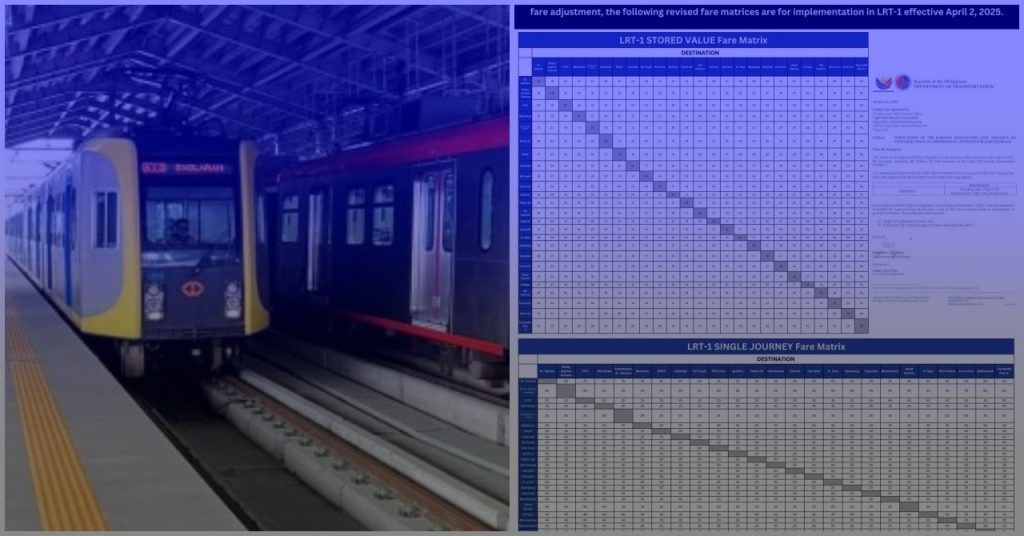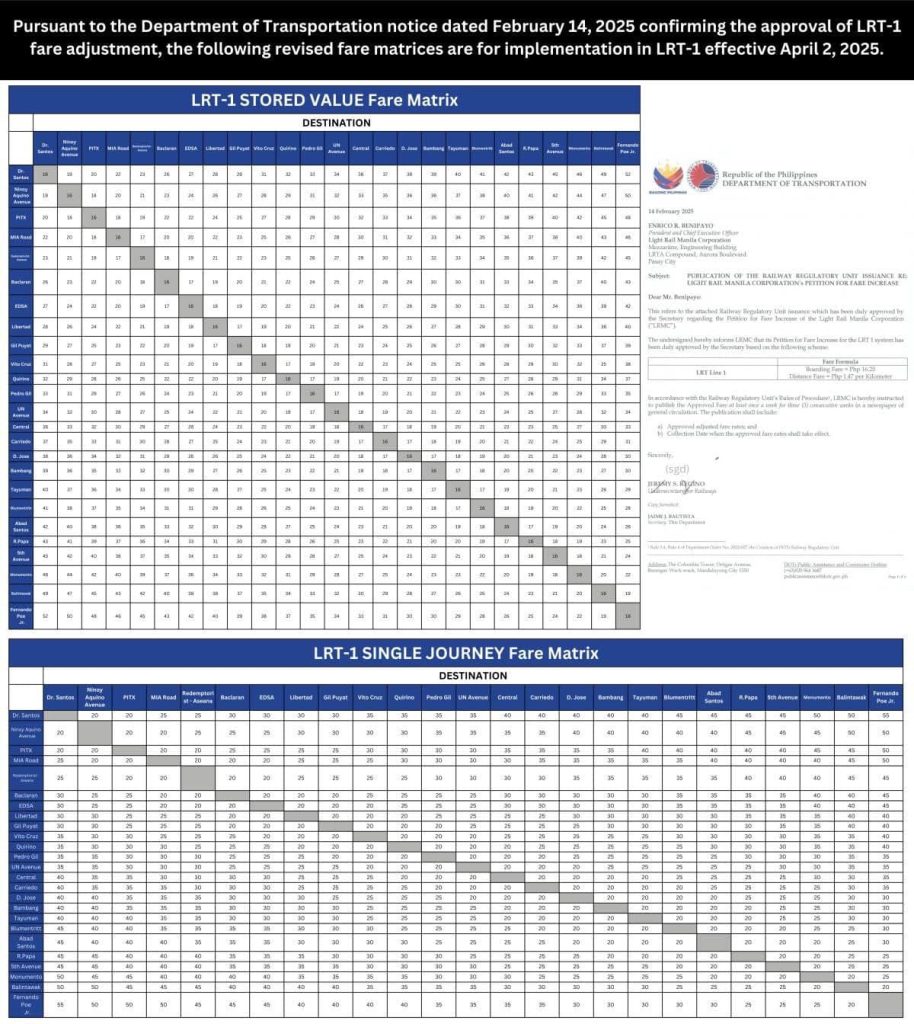Commuters using the Light Rail Transit (LRT) Line 1 should prepare for increased fares starting April 2, following approval from the Department of Transportation (DOTr). The Light Rail Manila Corporation (LRMC), which operates LRT-1, announced the hike through an official letter from Railways Undersecretary Jeremy Regino.
The revised fare formula sets the new boarding fare at P16.25 and the distance fare at P1.47 per kilometer, up from P13.29 and P1.29 per kilometer, respectively. As a result, the minimum fare for a single-journey ticket will rise from P15 to P20, while an end-to-end trip will increase from P45 to P55.

Why the Fare Increase?
According to LRMC, the fare hike is necessary to fund essential improvements in LRT-1’s operations and infrastructure. The company took over LRT-1 in 2015 under a concession agreement with DOTr and the Light Rail Transit Authority (LRTA). Under this agreement, fare adjustments are allowed every two years. However, previous fare hike petitions in 2016, 2018, 2020, and 2022 were denied.
LRMC President and CEO Enrico Benipayo emphasized that these delays led to a fare deficit of P2.17 billion as of November 2024. If no fare increase is approved until 2028, the deficit is expected to balloon to P7 billion. The upcoming hike is intended to recover a portion of the lost revenue and maintain the railway system’s sustainability.
Understanding the LRT-1 Fare Matrix

To provide clarity on the LRT-1 fare adjustments effective April 2, 2025, the image above displays the Stored Value Fare Matrix and the Single Journey Fare Matrix. These matrices outline the updated fare structure for commuters based on their starting and ending stations.
Key Takeaways from the Fare Matrix
- Stored Value vs. Single Journey Fares
- The Stored Value Fare Matrix applies to Beep card users, offering slightly lower fares compared to single-journey tickets.
- The Single Journey Fare Matrix shows ticket prices for one-time purchases, which are generally higher than stored value fares.
- Fare Calculation
- The boarding fare starts at ₱16.25, with an additional ₱1.47 per kilometer traveled.
- The fare progressively increases based on distance, meaning the longer the trip, the higher the cost.
- Example: A trip from Dr. Santos Station to Monumento costs ₱55 for stored value and ₱60 for a single journey ticket.
- Station-to-Station Pricing
- The matrices provide a comprehensive list of fare costs for each possible route.
- Prices are arranged in a grid format where the intersection of the origin and destination station determines the fare.
- Gray cells indicate the same station (no travel).
- Government Approval and Implementation
- A formal Department of Transportation (DOTr) document included in the image confirms the fare hike approval and mandates publication requirements.
- The fare increase follows regulations set by the Railway Regulatory Unit and will be implemented starting April 2, 2025.
How Will This Impact Commuters?
For daily LRT-1 users, the fare adjustment means higher transportation costs, particularly for those traveling long distances. While the increase may seem steep, LRMC assures passengers that the additional revenue will go toward enhancing safety, reliability, and overall service quality.
Despite the fare hike, LRT-1 remains one of the most affordable mass transit options in Metro Manila. The railway spans 25 stations over 26 kilometers, serving thousands of passengers daily from Dr. Santos to Monumento and Monumento to Fernando Poe Jr. stations.
Next Steps for Implementation
Per regulatory requirements, the LRMC must publish the approved fare adjustments in a newspaper of general circulation at least once a week for three consecutive weeks before implementation. This ensures commuters are well informed ahead of the April 2 rollout.
The Bigger Picture
While this fare hike is intended to address financial losses and improve services, it raises broader concerns about the affordability of public transportation. With inflation and economic pressures affecting daily expenses, many commuters may struggle to absorb additional travel costs.
The government and private sector continue to explore solutions to balance fare sustainability with commuter affordability. Initiatives such as discounted fares for students, senior citizens, and persons with disabilities may help alleviate the financial burden for vulnerable groups.